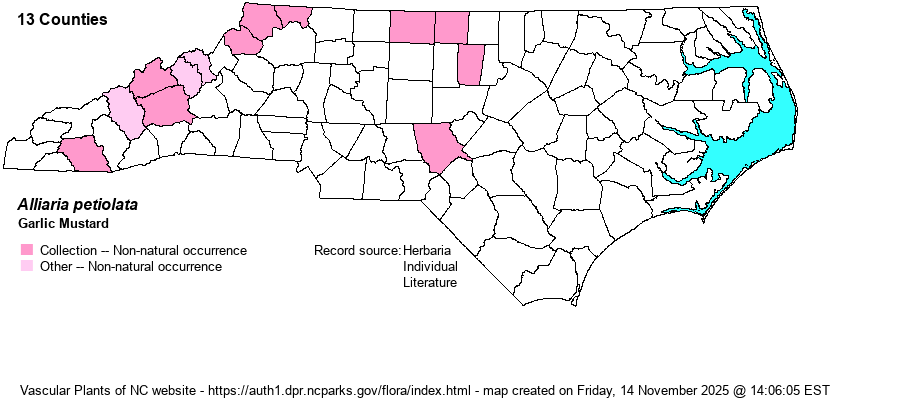| Author | (Bieberstein) Cavara & Grande | |
| Distribution | Mostly in the Mountains; a few counties in the northern Piedmont and one in the Sandhills. As this is a rapidly expanding species, it is to be expected in many more counties, especially in the northern Piedmont.
Native to Eurasia; in N.A. ME to Ont. and NE, south to NC, TN, and OK; also B.C. to OR; UT. | |
| Abundance | Rare to infrequent in general, but disturbingly common to locally abundant along the New River and the Dan River (and tributaries of both), near the VA state line. The population in Moore County was eradicated. This species is a noxious weed in floodplain forests in the northeastern U.S. and should be eliminated where possible in NC. | |
| Habitat | Floodplain forests and river banks, meadows, roadsides, trailsides, campus weed, near horse manure dump (Moore Co.). This species inhabits rich soil and does very well inside forests, especially in floodplains, where it outcompetes native species of high pH soil. | |
| Phenology | Flowering and fruiting April-June. | |
| Identification | Garlic Mustard is easy to identify. The stems grow 1-3 feet tall; the basal leaves are round-cordate and long-stalked, whereas the stem leaves are ovate to triangular and short-stalked, the margins of all sharply dentate. The flowers are terminal and in upper axils, white with 4 petals. The pods are slender and ascending. The plant has a garlic odor when crushed. | |
| Taxonomic Comments | | |
| Other Common Name(s) | | |
| State Rank | SE | |
| Global Rank | GNR | |
| State Status | | |
| US Status | | |
| USACE-agcp | FACU link |
| USACE-emp | FACU link |

